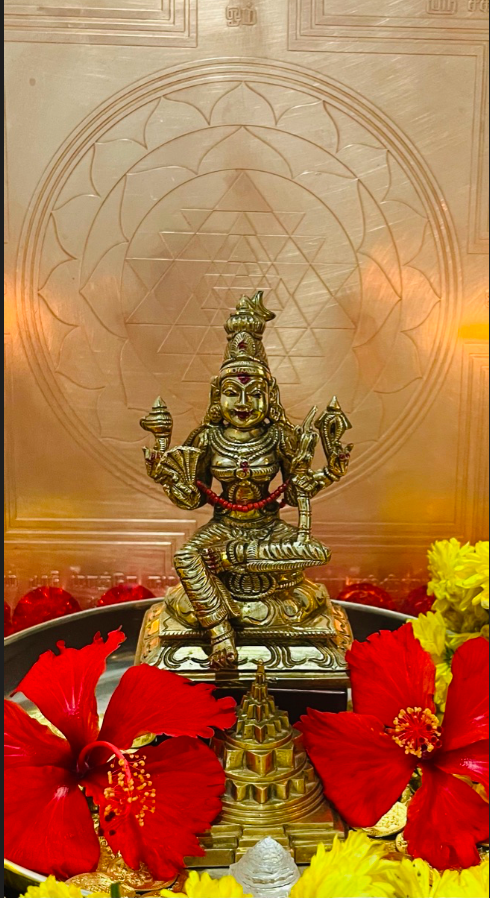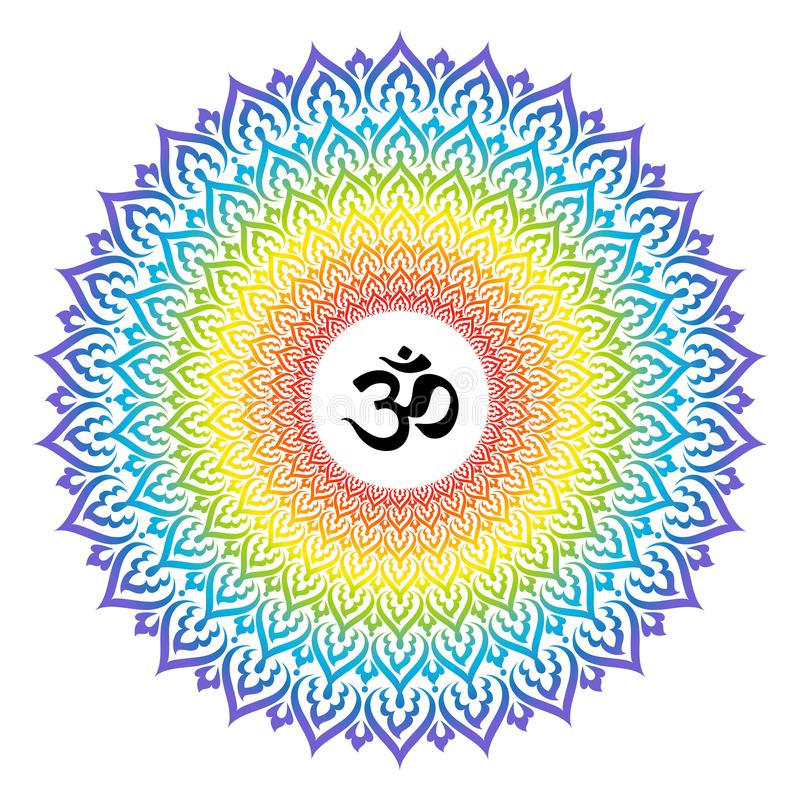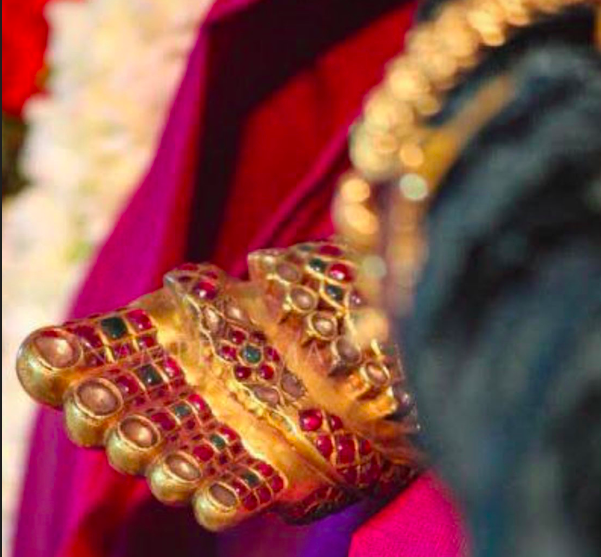Our contemporary lifestyle, characterised by a hectic pace, juggling multiple tasks while simultaneously essaying diverse roles, leaves us with little or no time for any activity outside of our routines. We have become increasingly cynical of even simple rituals that we see our elders diligently follow. We cannot fathom how lighting a ghee diya every evening or waving an agarbathi and sticking it in the tulsi pot can be relevant in a time when technology is so advanced. We feel that rituals are meaningless and based on superstitions and that they have no place in our complex, technology-drive lives. Sadly, this absence of rituals has left us feeling rootless, alone, disconnected, deeply stressed and depressed. The protection that our parents and grandparents enjoyed with their small spiritual practices, embedded in their culture and society, acted as a safety net, helping them cope not only with life-and-death situations but also in dealing with everyday events with equanimity and grace.

Rituals are essential as they offer us an opportunity to be conscious of the present moment. We need them more now than at any other time in human history as technology isolates us more and more from physical, social networks. We need rituals to survive just as much as we need food, water, shelter and social interactions. Rituals help us feel a sense of belonging and being connected with something greater than our immediate needs and situation. A sense of belonging is one of the most essential needs that have to be met to lead a satisfactory life. In ancient cultures and tribes, excommunication was considered a fate worse than death. We all need to connect not only with each other but with the universe around us. Rituals are a portal which can guide us to find connections not only with ourselves but also with our surroundings and to eventually establish a direct link with the universal intelligence, which we call divinity.
We need to know the difference between a habit and a ritual. A habit is a more or less mechanical activity, which we carry out mindlessly, out of sheer practice. Rituals, on the other hand, can only be carried out with extreme mindfulness. A ritual needs energy, intention and commitment. A ritual needs our full attention, and we need to be firmly rooted in the present moment to carry it out. Carrying out a ritual provides a sense of control which helps in alleviating anxiety and stress.
Gerontology expert Rhonda Curtis points out that “ritual expands our horizons to aspects of life beyond daily requirements. Rituals give the events we experience in our lives meaning and our lives themselves a sense of purpose. A ritual requires preparation and thoughtfulness, and thus it helps us shift from “to-do” mode to “into doing” whatever may be required for the completion of the chosen ritual experience.”

Our cognitive makeup is such that the brain works by making predictions about present situations based on past experience. In times of stress or change, the brain’s ability to predict becomes limited because such a situation has not been encountered before, and there is no previous experience to base its prediction on. It is here that rituals assert their importance. By their very nature, rituals are highly structured and repetitive, making them “predictable”. The brain sees them as activities which offer an escape from the uncertain. We know how to do the ritual, and the outcome will hold no surprises; therefore, the mind-body mechanism loves it as it helps relieve anxiety and calms the overactive nervous system.
Joseph Campbell says: “A ritual is the enactment of a myth. And, by participating in the ritual, you are participating in the myth. And since myth is a projection of the depth of wisdom of the psyche, by participating in a ritual, participating in the myth, you are being, as it were, put in accord with that wisdom, which is the wisdom that is inherent within you anyhow. Your consciousness is being reminded of the wisdom of your own life. I think ritual is terribly important.”
Establishing a ritual requires consistency and dedication. A study conducted at University College London shows that it takes an average of sixty six days to form new behavioural patterns. Commitment is essential to incorporate a new ritual into our routines, but with time and practice, it will begin to feel natural, necessary and effortless.
Jewish writer Avram Davis observes: “We are what we practice. If we become angry a lot, then essentially, we are practising anger. And we get quite good at it. Conversely, if we practice being joyful, then a joyful person is what we become.”

Though the nature of rituals is highly emotional, research shows they are more rational than we think. Rituals can turn ordinary experiences into sacred moments by making us aware of the transcendental nature of the universe. They increase awareness and help us become more appreciative of all that we have in our lives. If you have ever been in a group chanting session or a kirtan, you will know that rituals bring people together around a shared experience. Rituals are personal – you get to design your own to suit your lifestyle and fit in with your temperament, and most importantly, rituals are an evolving practice. Today, a specific ritual may work well for you, but tomorrow, you may want to try another method. A ritual does not promise you a destination. It sets you on the path to finding your own.
This book is about the use of chanting as a ritual that we can incorporate into our daily lives. The purpose of chanting is to bring about silence in the ever-chattering mind. The process of repetition of a word or set of words helps bring about a temporary state of mindfulness as the brain is wholly absorbed in the activity of repetition. Chanting is a beneficial step in learning meditation as it offers a vehicle for the mind to transport itself to a higher realm.
The Kamakoti Mandali, which comprises a close-knit group of Sri Vidya practitioners, describes how mantras work: “A human being is composed of various layers or types of bodies, and the Para Shakti pervades and illuminates all these bodies through different aspects of prana assimilated through mechanisms such as breathing for the Sthula Sharira, etc., The energetic link between the lower and higher bodies is the breath or the prana, and the path to transcendence lies in its neutralisation. Every technique of upasna is, in one way or the other, aimed at modifying the breath or prana to refine it and intensify awareness of the subtle and inner breath current connected with the higher bodies. The simplest way to accomplish this is through the might of unmoving attention directed towards an external or internal object, breath itself being an important option. The acts of silencing the mind and the breath are interconnected, and a mantra is an important way to accomplish both. The generally chaotic mind is regulated through powerful waves of energy generated by the mantra, and the focused attention of the sadhaka on the mantra acts as a means to sublimate the breath and the mind.”

The Sanskrit word mantra can be broken up into “man,” meaning “mind,” and “tra,” meaning “tool” or “instrument.” The vibrations created by the sound and the focus on rhythmic pronunciation profoundly affect the body and mind. The nervous system experiences a slowdown of activities, and calmness descends, which reduces stress, high blood pressure and pain and improves immunity.
The Vedas describe a mantra as “mananaat traayate iti mantrah” – that which uplifts us by continuous repetition is a mantra and Vedic texts recommend the chanting of mantras as a part of spiritual practice.
It is not necessary to
learn elaborate Sanskrit verses to practice chanting. Just chanting “Om” is
equally effective when done correctly. Om is considered a mantra even though it
is a single word. Modern scientific studies have established that the sound of
Om, when chanted, vibrates at a frequency of 432 Hz, which is said
to be the frequency found throughout the universe (the humming sound of
nature).
238 total views, 1 views today

